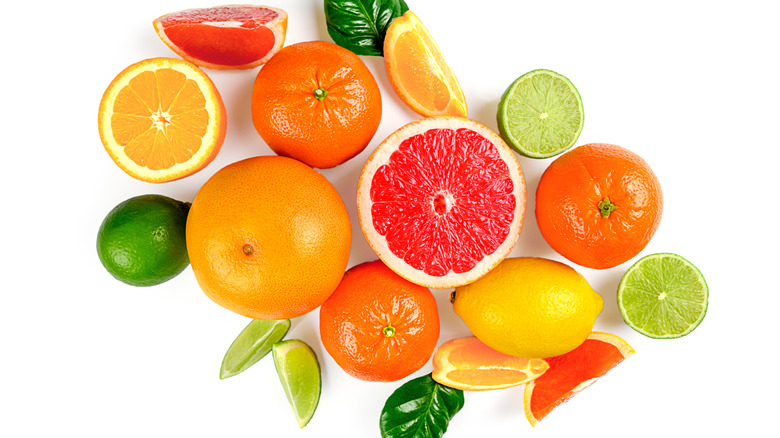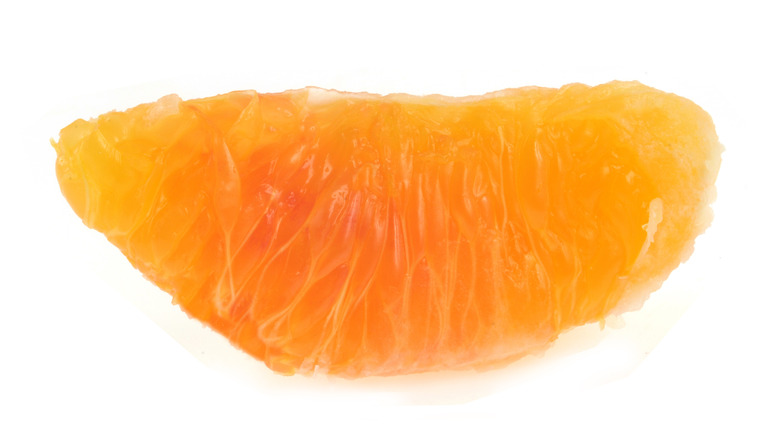What Does It Mean To 'Supreme' Citrus?
Fruit is one of the healthiest snacks nature provides. Fruit often comes with a built-in wrapping or outer skin. However, sometimes peeling a tiny clementine or wielding a giant knife to hack at a pineapple can feel like more work than opening up a pre-packaged bag of fruit snacks. For this reason, in certain families and cultures, presenting someone with sliced fruit can be a love language. According to Eater, the idea of cutting fruit as a labor of love even had a food-writing moment.
But there are many ways to cut fruits and vegetables. Oranges and citrus fruit accommodate various cutting methods: Hand peeling, knife peeling, cutting the orange into segments or wheels, and then slicing with the peel on, according to culinary scientist Jessica Gavin. However, another elaborate and labor-intensive way to prepare your citrus fruits is to supreme them. If cut fruit is your love language, you don't want to miss this method of preparing an orange.
How to supreme citrus
According to The Kitchn, the supreme cutting method originates from French culinary traditions. Therefore, it is pronounced "soo-PREM," so that the emphasis is not on the first vowel. Essentially, to supreme a citrus means to remove the fibrous walls entirely, leaving only the juicy and sweet flesh segments for consumption. While this method reduces the fiber content, supremes are ideal for salads or desserts because there is no bitterness or toughness from the white pith lining.
For those who are interested in trying out this technique, it's important to ensure that you have a sharp knife on hand. Then, take your orange or citrus fruit and cut off the ends on a cutting board, and then lay it on a flat end.
Next, cut off the peel and pith, working in sections, following the shape of the fruit. The last step is to slice the segments while the fruit is on its side, removing the flesh from the membrane and putting each segment in a bowl (via Martha Stewart).
However, the traditional supreme process creates a lot of waste. If you've got time on your hands, Discover Magazine has a far easier method that uses science. All it takes is using a solution made with pectinase, which is an enzyme that breaks down the tough tissue. Simply soak your peeled citrus in a bowl in the pectinase solution (along with some water) and leave it in the fridge for two days. Then, give the fruit a simple rinse.

